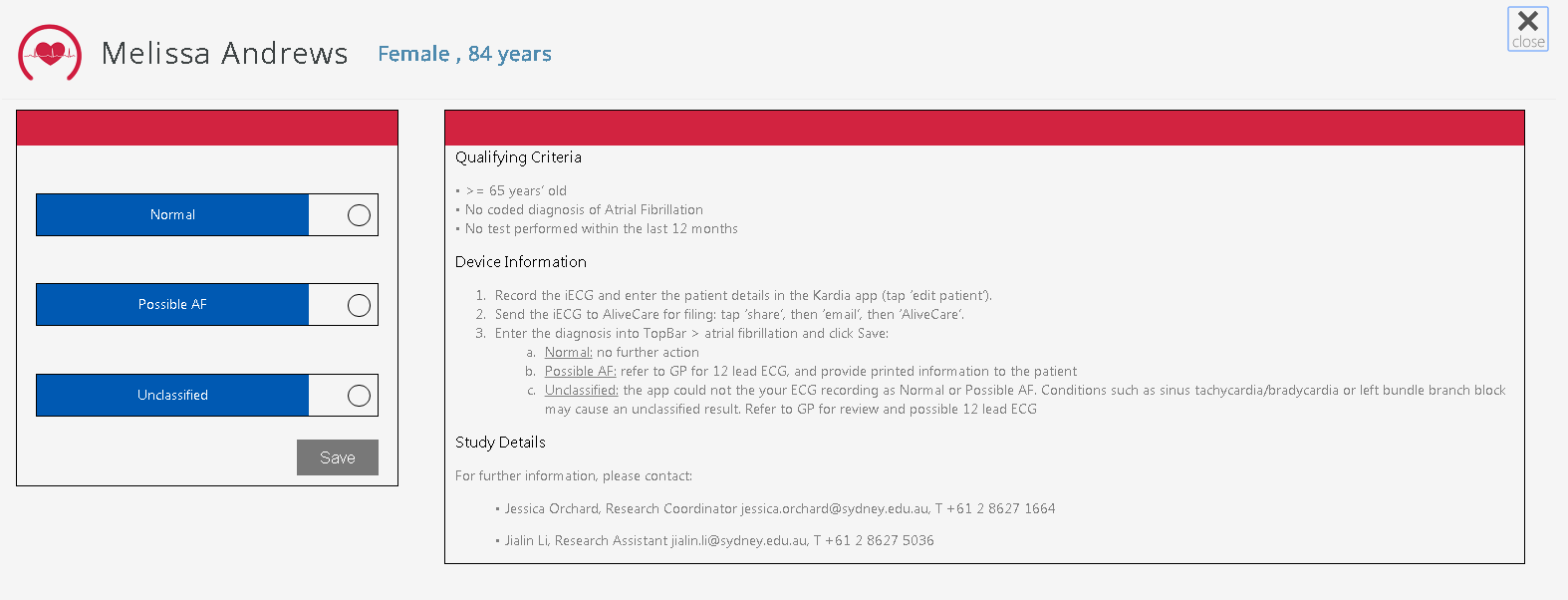Page History
Background
The University of Sydney is undertaking an Atrial Fibrillation (AF) study within ten General Practices. The study involves clinicians utilizing an existing mobile device to ascertain if the patients pulse indicates to be normal patient's pulse indicates a normal result reading or otherwise otherwise. The mobile device will be used as a decision support tool. The AF Topbar app will notify the clinician when patients are eligible for the mobile device.
The Atrial Fibrillation ( AF ) app will only display a notification, based on the following requirements:
...
- Patient does not meet qualifying Criteriac riteria
The data collected through the AF app in Topbar will be extracted by CAT4 and added to the file sent to 'The George Institute'. The four additional fields added to the file are:
- AF Test Data (dd/mm/yyyy)
- AF Test Time
- AF Test Result
- Topbar username
Only patient patients that have data stored in the Topbar database will be able to populate the cells in the CSV. If a patient does have the appropriate data, then the cells will be blank.
Displaying the AF app
The AF app is displayed automatically when an eligible patient is opened in the clinical system and shows a small red circle with the number 1 to indicate one new notification.
...
The AF app can be turned off by clicking on the close option, or hidden by using the 'hide' option.
...
...
Atrial Fibrillation App use
Clicking on the tile for the AF app will open the full screen view for the currently opened patient:
The screenshot above is missing the 'Device Information' and the 'Study Details' text. In the final version the text displayed will be:
The following text will be displayed regardless of whether a patient meets the qualifying criteria or not.
Device |
...
Information
|
Study |
...
Details For further information, please contact: Jessica Orchard, Research Coordinator jessica.orchard@sydney.edu.au, T +61 2 8627 1664 Jialin Li, Research Assistant jialin.li@sydney.edu.au, T +61 2 8627 5036 |
...
When a user wants to record the patients pulse result, delivered and reported through the mobile device, the three following radio button options are available for selection;
...
Once an outcome of the test (Normal, Possible AF or Unclassified) is recorded, there are no further actions in the AF app. The red notification circle with the number 1 app has now disappeared from Topbar and will not be shown again for this patient for the next 12 months and then only if the patient still meets the eligibility criteria described in the introduction. The app can now be closed or hidden using the respective button and It will appear again when the next eligible patient is opened in the clinical system.




